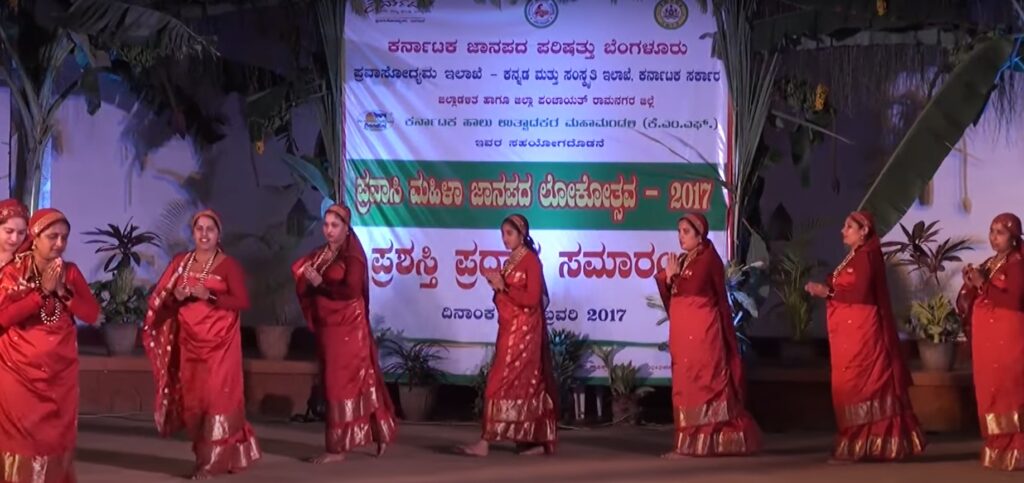Huttari dance is also known as the Kodagu dance. It is one of the most spirited dances of Karnataka and has various local versions. The slow dance is done at the occasion of harvesting as a yearly custom.

Kodava Tribe
Kodavas are thought of as the benevolent Ethno-lingual community from a place named Kodagu. It is situated in the state of Karnataka. They originally speak the language of Kodava. Most commonly found Kodavas are agronomists with combative customs. Kodavas are the only people in India allowed to carry guns and other firearms without having a license for them.
Most of the time, Kodavas spend time around the field for harvesting purposes, including protecting the crops from wild animals. Kodavas, instead of these tough jobs, also celebrate the “Puttari” harvest festival, which means “new rice”. It takes place during November or December every year. On the day of the festival, all the houses are garnished with mango leaves and marigold flowers. The festival begins with a gunshot being fired to signal the beginning of the harvest time, continued by rice being carried home to gift the gods. Youngsters go meet their neighbors, showing off their dance skills. Huttari Dance is also performed on Huttari songs.
Huttari Dance Costumes
Dance costumes and dance forms differ depending on the different forms of the Huttari dance. Men mostly wear conventional Kodava outfits with fancy knives. The Kodava outfits precisely differ as per the dance form performed. Huttari dance has different forms like:
Bolak-aat
Bolak-aat dance is performed by the men of Kodava. They dress fully in black with an oil lamp in an open field. They wield a Kodava sword held in one hand and a chavri (yak fur) on the other hand. The dance is performed on the tune given by Dudi, which is an hour-glass shaped drum.
Ummatt-aat
Ummatt-aat is performed by the women of Kodava dressing in the conventional Kodava outfit. It includes a red-colored silk sari and a red full-sleeved Coorg blouse along with a red-colored scarf around their head. They also wear bangles, necklaces, and other jewelry. The dance performance is done in a circling motion and a swinging tune. Women have brass cymbals (bells) in their arms. One woman stands in the middle holding a pot filled with water to resemble Mother Kaveri.
Komb-aat
Komb-aat, is a devotional dance which is carried out in a temple by the Kodava men. They carry horns of a deer that indicate the horns of the “Krishna murga” (a deer of a Kodava epic) while playing tunes on wind instruments and drums.

Pingback: All Folk Dances of India - Auchitya
Pingback: All Folk Dances of India - Auchitya